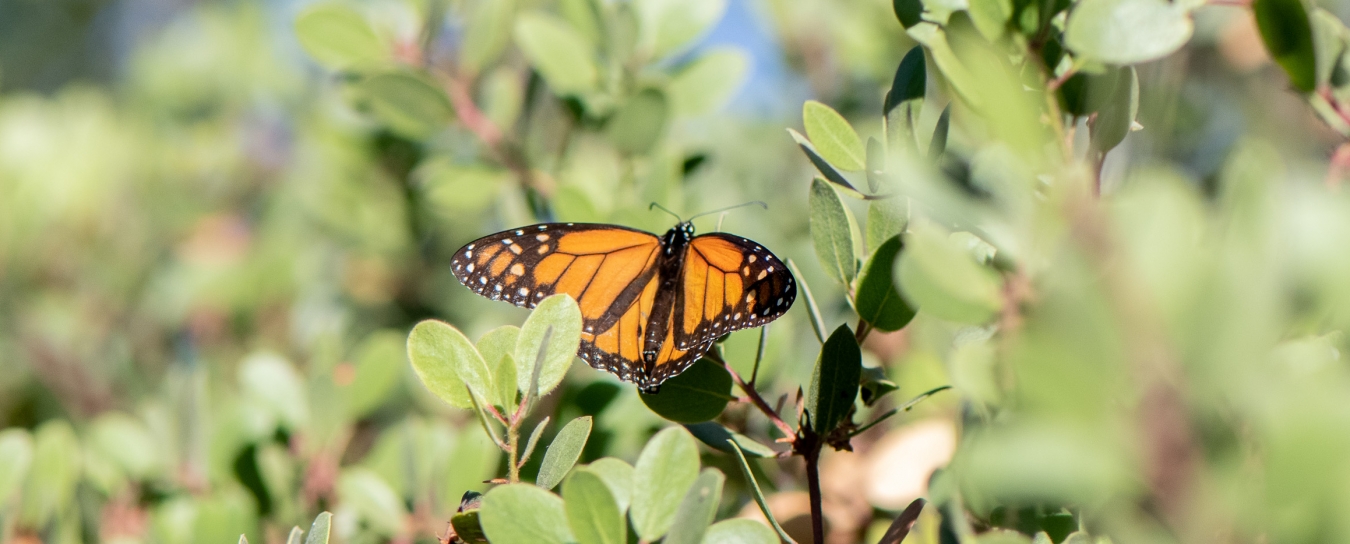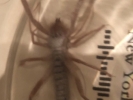
Invertebrates
See our handy guide to critters found in local homes and our Central Coast Butterfly FAQ. Browse the insects and other terrestrial arthropods we’ve identified. Check out local marine invertebrates, particularly bivalve mollusks and intertidal organisms.
- Anthropology
- Rocks & Fossils
- Invertebrates
- Vertebrates
- Botany
- Astronomy
- Fungi
- General
- Recently Asked
Is this a wind scorpion?
I came across it in my bathroom. When I placed a glass over it—in order to capture it and relocate it outside—it spun around faster than anything I've ever seen in my life.

Curator Response
Hi Erik,
This is indeed a windscorpion, also known as a camel spider, or sun spider, but since they're neither scorpions nor spiders, but a different order of arachnids altogether, I prefer to call them by the name of their order, Solifugae (SOUL-ih-FYOO-jee). As you observed, they're extremely swift critters, taking advantage of their eight long legs to run down their insect and arachnid prey. While it may appear that this beast has five pairs of legs, the first pair of leg-like structures (bigger than the first pair of real legs!) are actually appendages called pedipalps, which are used for sensory purposes, not for walking or running. Unlike male spiders, who use their pedipalps to store and transfer sperm to the female, some Solifugae use their chelicerae (jaws) to transfer sperm to the female. When handled, Solifugae are able to give a painful, pinching bite with their massive chelicerae, but they do not possess any venom, so despite their intimidating appearance they are actually of no medical concern.
Although this arachnid order is much less diverse than many of the other orders, it still contains about 80 species from California, and there are certainly many more waiting to be discovered.
Keep up the good work rescuing arachnids,
Schlinger Chair and Curator of Entomology Matthew L. Gimmel, Ph.D.

